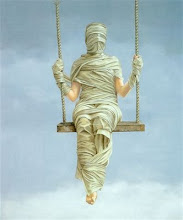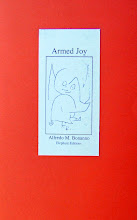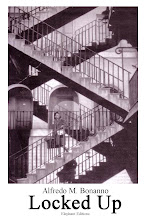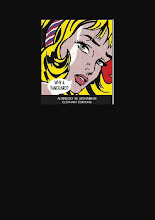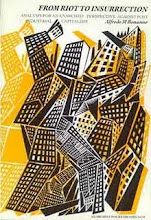Our understanding of technology must be critical in two ways, first because it supplies support to power in general, meaning that it could be put to unforeseeable use in the future, and because it could do an about-turn to the point of adapting to the social conditions that are in the course of modification. One could say, and recent ecologist modifi-cations bear witness to this, that all defensive positions contain a hidden critical and just as plausible turning. In the same way, all critical analy-sis that examines the defects of the present time in order to correct them, contains the possibility turning to its defence, all the stronger the more it finds itself capable of going beyond these same critical considerations.
Often the multiplicity of fields where technology is used and reproduces itself, where the thought systems that create its premises concerning its consumption and production are elaborated, give rise toquite unpredictable problems of interaction. The inconsiderate man-agement of the way some of the technologies are used makes it impossi-ble to make forecasts, either way. In the strict sense of the word, it would not even justify our negative, destructive, aspirations. But, the irresponsibility of others who simply put their heads under the sand, does not induce us to wait passively or rely on our intuition. We might also be wrong and thus be contributing to nipping in the bud, or putting obstacles in the way, of the genial emergence of man’s future happiness, but there does not seem to be any sign of miracles appearing on the pre-sent scientific panorama. Approximation and superficiality reign, miti-gating themselves in only all the short-lived projects that are taking the place of the old long-term illusions.
Of course, scientific ideas and their technological application have always modified matter, subjecting it to man’s needs and his basic desire to make reality adapt to his ideas.
This “historical” course of human affairs does not exactly corre-spond to what we normally call reality, in that it cannot be said that many of the technological and scientific adaptations of matter have been positive facts for man, from gunpowder to the atomic bomb. But one can certainly see a tortuous and often contradictory movement aimed at re-ducing the spontaneity of nature and life processes in general to the con-trollability and reproducibility of technics. Basically, of all the animals man is the one least capable of living in nature. He is among those with fewest defences, the weakest cubs, but with an exceptional capacity for changing environmental conditions from unfavourable to favourable.
That is why what we know as man today, the product of a brief historical evolution of a few thousand years, is also a product of tech-nics. There would be nothing wrong at this point if these technics were still simply aimed at modifying reality, creating prostheses which, if not exactly useful to man, could at least be controlled by him. Of course, by increasing man’s limited possibilities, any prosthesis at all turns him into a giant capable of levels of destruction undreamed of even by the Titans. This means that the germ of the danger lies in the very concept of the multiplication of strength - but because the prosthesis is always some-thing useful, it seems to be worth a few risks. And so it has been for thousands of years. Terrible prostheses, from bronze to iron and steel to missiles, have followed one another, often without giving us time to think about it. Attracting enthusiasm and imbecility, sterile opposition and hopeful incantation.
Still in the field of changes in matter, i.e. in the construction of the prosthesis, although this could present serious dangers there was al-ways the possibility, theoretical at least, of providing controls capable of putting a brake on human lack of consideration.
All that has been transformed profoundly with the technology of the last two decades. The danger has reached intolerable limits for two reasons that are often not well understood, so all criticism of technology tends to spill over either into becoming too generic, simply trying to ex-orcise some hidden danger, or into attempts to distinguish something that, due to ignorance, cannot be distinguished.
The first of these reasons is due to the fact that technology does not just change matter today, i.e. work on it to produce different uses, but actually penetrates it, thereby altering its composition. The second is that everything that it is now possible for everything realised by tech-nology to be modified unpredictably by this penetration of matter, ren-dering certain scientific aspects, hypotheses or simple technical discov-eries that were once kept under control extremely dangerous.
The creation of new materials, new living beings, a new virtual reality considered a further step in scientific research and the relative technical applications, is no worse than the invention of chemical arms, nuclear reactors or the hydrogen bomb, we know. But, even without go-ing into specific questions too deeply, you cannot fail to be surprised by the fact that we have reached a new threshold. Genetic or molecular modification, as well as the realisation of a fantastic reality within which it is possible to reach the full sensation of being and acting, are allowing living beings and absolutely unknown materials to be produced on a wide scale, as well as have it believed that previously unthinkable be-haviour is possible. This is accelerating the process of detachment from reality that is so useful to the management of consensus. Many of the new products – including the virtual possibility of experimenting with inexistent reality – are inserting themselves into all the other materials, all other living beings and the whole experience of reality as we know it. This could lead to unforeseeable consequences for those who today, in-side their laboratories, are limiting themselves to bringing about these transformations without asking themselves anything about the conse-quences. The simple production of a huge cow or a tiny horse for labora-tories, or a mouse as big as a horse, can impress no one but science fic-tion enthusiasts. The same goes for the production of super-conducting materials capable of transferring electricity practically without loss. The same goes for virtual reality through a massive use of the whole com-puter network. It will be fascinating at first, then upset the order of things and finally uniform them to the norms of the new common sense, packaged and conditioned precisely at the moment presents itself in the guise of the freedom to live one’s dreams in this reality.
No one can say what the reaction of the environment to certain materials and living beings will be. No one can foresee how our world will be changed by our modified behaviour, once this interacts with the new materials. If the technology of the past, a complete system founded upon the scientific hypothesis of research and analyses, presented dan-gers, these could be circumscribed within certain limits, or at least were able to control each other in the field of opposing interests. And if it pre-sented the revolutionary possibility of one day becoming the instrument of liberation, abolishing class division and the ghost of the State - if all that was true and in many aspects plausable, it was because each new wedge in the whole technological and scientific framework could to some extent be predicted.
Now that this possibility to predict has disappeared both in the case of the single prosthesis (which can no longer be defined such), and the interaction of each new individual technological production with the whole social formation, we finally see that even the old managerial illu-sions of control and limitation were but the product of an historical era that has come to an end.
And, not being able to foresee the consequences, even the most innocuous experimentation could concur in the irremediable spreading of a terrible catastrophe.
AFFINITY
Anarchists have an ambivalent relationship with the problem of organisation.
On the one hand there is the acceptation of the permanent struc-ture with a well defined program and means at their disposal (even if only a few), divided up into commissions; on the other the refusal of any stable relationship, even in the short time.
Classical anarchist federations (old and new) and individualists are two extremes of something that represents an escape from the reality of the clash. The comrade who belongs to an organised structure hopes that a revolutionary transformation of reality will come forth from quan-titative growth, so he supports the cheap illusion that it is possible to control any authoritarian involution by the structure, or any concession to the logic of the party. The individualist comrade is jealous of his own ego and fears any form of contamination, any concession to others, any active collaboration, thinking such things to be giving in and compro-mise.
Even to comrades who consider the problem of specific organi-sation and the federation of groups ciritically on the basis of an ideo-logical clarification, this becomes the natural consequence.
The organisation is thus born before struggles and ends up adapting to the perspective of a certain kind of struggle which – at least one supposes – is to make the organisation itself grow. In this way the structure turns out to be a vicarious form concerning the repressive deci-sions made by power, which for various reasons dominates the scene of the class struggle. Resistance and self-organisation of the exploited are seen as molecular elements which can be grasped here and there, but which become meaningful only after they enter and become part of the specific structure or let themselves be regrouped in mass organisms un-der the (more or less direct) leadership of the latter.
In this way, one is always in the position of waiting. It is as though we are all in provisional liberty. We scrutinise the attitudes of power and keep ourselves ready to react (always within the limits of the possible) to the repression that strikes us. Hardly ever taking the initia-tive, set out our interventions in first person, or overturning the logic of losers. Anyone who recognises themselves in structured organisations expects quantitative growth. Anyone who works within mass structures (for example in the anarcho-syndicalist optic) is waiting for today’s small claims to turn into the great revolutionary results of tomorrow. Anyone who denies all that also spends their time waiting, they are not sure what for, often closed up in resentment against all and everything, sure of their own ideas without realising that they are no more than the negative side of the other organisational and programatical affirmation.
It seems to us that something else could be done.
We start off from the consideration that it is necessary to estab-lish contacts with other comrades in order to pass to action. Alone one is not in a condition to act, except by reducing oneself to platonic protest, bloody and terrible as you like, but still platonic. If one wants to act in-cisively on reality it is necessary to be many.
On what basis can we find other comrades? We cast aside any hypothesis of programmes and platforms in advance, laying them out once and for all. So what is left?
Affinity.
Affinities and divergences exist between anarchists. I am not talking about personal affinity here, i.e. of those aspects of sentiment that often link comrades between them (love in the first place, friend-ship, sympathy, etc.), I am talking about a deepening of reciprocal knowledge. The more this deepening grows, the greater the affinity can become. In the case of the contrary, divergences can turn out to be so obvious as to make any common action impossible. The solution there-fore lies in the growth in common knowledge, to be developed through a projectual examination of the various problems that the class struggle presents us with.
A whole range of problems that we want to face exists, and usu-ally care is taken not explain in their entirety. We often limit ourselves to problems that are closer because they are those that touch us most (repression, prison, etc.).
But it is precisely in our capacity to examine the problem that we want to face that the most suitable means for fixing the conditions of affinity reveals itself. This can obviously never be absolute or total (ex-cept in very rare cases), but can be sufficient for fixing suitable relations for action.
If we restrict our interventions to the most obvious and superfi-cial aspects of what we consider the immediate and essential problems to be, we will never be able to discover the affinity that interests us, and will always be wandering about at the mercy of sudden and unsuspected contradictions capable of upsetting any project of intervention in reality. I insist on pointing out that affinity should not be confused with senti-ment. There can be comrades, with whom we recognise affinity, whom we do not like very much and, vice versa, comrades with whom we do not have any affinity, whom we like for various other reasons.
Among other things, it is important not to let oneself be hin-dered in one’s action by false problems such as the presumed differen-tiation between feelings and political motivations. From what has been said above it might seem that feelings should be kept separate from po-litical analysis, so we could, for example, love someone and not share their ideas at all and vice versa. That is roughly possible, no matter how lacerating it might be. But in the concept of going into the range of prob-lems, a concept expressed above, the personal aspect (or that of feelings if you like) must also be included, in that succumbing instinctively to our impulses often signifies lack of reflection and analysis, not being able to admit to simply being possessed by god.
From what said there emerges, even nebulously, a first ap-proximation of our way of considering the anarchist group: a number of comrades linked by common affinity.
The more the project that these comrades build together is gone into, the greater their affinity will be. It follows that the real organisa-tion, the effective (and not fictitious) capacity to act together, that is to find each other, study analyses and pass to action, is in relation to the affinity reached and does not have anything to do with more or less camouflaged monograms, programmes, platforms, flags or parties.
The affinity group is therefore a specific organisation that comes together around common affinities. These cannot be identical for all, but the different comrades will have infinite affinity structures, all the more varied the wider their effort of analytical quest that is reached.
It follows that all these comrades will also tend towards quanti-tative growth, which is limited and not constituted of the aim of activity alone. Numerical development is indispensable to action and it is also a test of the breadth of the analyses that one is developing and of its ca-pacity to gradually discover affinity with a greater number of comrades.
It follows that the organism thus born will end up by giving it-self common means of intervention. First an instrument of debate neces-sary for the analysis, capable, as far as possible, of supplying indications on a vast range of problems and, at the same time, of constituting a point of reference for the verification – at a personal or collective level – of the affinities or divergency that arises.
Lastly it should be said that the element that holds a group of this kind together is without doubt affinity, but its propulsive aspect is action. To limit oneself to the first element and leaving the second one under-dimensioned, any relationship withers in Byzantian perfectionism.
Informal organisation
First let us distinguish the informal anarchist organisation from the anarchist organisation of synthesis. Considerable clarifications will emerge from this distinction by contrast.
What is an - obviously anarchist and specific - organisation of synthesis? It is a question of an organisational structure based on groups or individuals which are in more or less constant relation to each other, which has its culminating moment in periodical congresses. In these public meetings basic theoretical analyses are discussed, a program is analysed and tasks are shared covering a whole range of interventions in the social field. This organisation therefore sets itself up as a point of reference, like a pole capable of synthesizing the struggles that are going on in reality of the class clash. The various commissions of this organ-isational model intervene in the struggles (either as single comrades or as groups) and, intervening, give their contribution in first person but without losing site of the theoretical and practical orientation of the or-ganisation, as a whole, decided in the preceding congress.
When this kind of organisation develops to the fullness of its capacity (such as happened in Spain in ’36) it dangerously begins to re-semble a party. Synthesis transforms itself into control. Of course, in moments of slack, this involution is less obvious, and might even seem a swear-word, but in other moments it turns out to be more visible.
In substance, in the organisation of synthesis (always specific and anarchist), there is the assumption of a nucleus of specialists who work out proposals both at the theoretical and ideological level, adapting them, as far as possible, to the program roughly decided on at periodical congresses. The shifting away from this program can also be consider-able (after all anarchists would never admit to a too slavish adjustment), but, when they occur, they take care, in the shortest possible time, to bring them back to the normality of the line decided on before.
This organisation’s project of intervention is therefore that of being present in the different realities: antimilitarism, nuclear power, unions, prisons, ecology, interventions in living areas, unemployment, schools, etc. This presence translates itself into direct intervention, either organised directly, or by participating in interventions managed by other comrades or organisations (anarchist or not).
One thus deduces that this participation, having the aim of bringing the struggle to within the project of synthesis, cannot therefore be autonomous, cannot really adapt to the conditions of the struggle, cannot collaborate effectively on a plan of clarity with the other revolu-tionary forces, except through the ideological filter of synthesis, or through the conditions imposed by the project approved earlier in the congress.
This situation, which is not always as rigid as it might seem here, carries the ineliminable tendency of organisations of synthesis to drag struggles to the the level of the base, proposing caution and con-trivances aimed at redimensioning any flight forward, any choice of too open an objective or any use of means that might be too dangerous.
For example, if a group belonging to this kind of organisation (of synthesis, yet always specific and anarchist) adheres to a structure that is struggling, let us say, against repression, it will be forced to evaluate the actions proposed by this structure in the light of the analy-ses made precedingly and roughly approved in the congress. It derives from this that the structure would have to adopt these analyses, or the group belonging to the organisation of synthesis would stop its collabo-ration (if it is in a minority) or will impose expulsion (in fact, even if not with a precise motion) of those who proposed different methods of struggle.
Although this might displease some, things go exactly like that.
One might ask why on earth the proposal of the group that is part of the organisation of synthesis must by definition always be more backward, i.e. at the rearguard, or more cautious than other proposals concerning possible actions of attack against the structures of repression and social consensus.
Why? The answer is simple. The specific anarchist organisation of synthesis, which, as we have seen, finds its culminating moment in periodical congresses, has quantitative growth as its fundamental aim. As a structure of synthesis it needs an operative force that must grow. Not exactly to infinity, but almost. In the case of the contrary it would not even have the capacity to intervene in the various realities and would not even be able to assume its own main task which is, precisely, that of proceding to synthesis in one unique point of reference.
Now, anyone who has quantitative growth as their primary aim must use instruments of intervention in reality that can guarantee prose-lytism and pluralism. It cannot assume a net and clear position before any problem, but must find a middle way, a political road to upset the fewest and turn out to be acceptable to most.
Again, on a few problems such as repression and prisons in par-ticular, the most correct position is often the most dangerous one, and no group can put at risk an organisation they belong to without first agree-ing with the other groups. But that can only happen in congressual sit-ting, or at least at an extraordinary meeting, and all know that precisely in these sittings things it is always the most moderate opinion that ends up prevailing, certainly not the most advanced one.
So, ineluctably, the presence of the organisation of synthesis within the real struggles, of the struggles that insert themselves in the quick of the class struggle, constitute a brake and control (often involun-tarily, but it is still a question of control).
The informal organisation does not present these problems. The affinity groups and the comrades who recognise themselves in a projec-tual area of an informal nature are together in fact, certainly through ad-hering to a program fixed by a congress. The project they recognise themselves in is realised by themselves, in their analyses and actions. It can find an occasional point of reference in a paper or series of meet-ings, but only in order to facilitate things, while it has nothing to do with congresses or other such things.
The comrades who recognise themselves in an informal organi-sation are automatically part of it. They keep in contact with the other comrades, through a paper or by other means, but what is more impor-tant, they do so by participating in the various actions, demonstrations, encounters, etc, which take place from time to time. The central point of verification and analysis is therefore given by seeing each other on the occasion of moments of struggle which, at first might simply be mo-ments of theoretical verification, then to become more.
There is no problem of synthesis in an informal organisation, there is no desire to be present in the various situations or even less for-mulate a project that takes the struggles into the seabed of a programe that has been approved in advance.
The only constant point of reference is the insurrectional meth-odology: in other terms the selforganisation of the struggles, permanent conflictuality and attack.
skip to main |
skip to sidebar

Some writings of Alfredo Maria Bonanno in English, or almost

Alfredo Bonanno was arrested on October 1st 2009 in Greece, accused of concourse in robbery. With him, anarchist comrade Christos Stratigopoulos.
Here are a few translations and part translations of a small portion of Alfredo's writing. This is a work in progress, many of the translations are as yet incomplete. Open links to find more of Alfredo's work.
Alfredo Bonnano Released
Nov. 22 Alfredo Bonnano was sentenced to 4 years imprisonment (which practically means that with the time served so far and the fact that he is over 70years old HE IS RELEASED
Christos Stratigopoulos (who took responsibility for the action)
was sentenced to 8 years and 9 months with the Greek law will probably be released at the end 2011
BY ANY MEANS NECESSARY
LINKS
click on any of these labels to read text
- "Community" sickness
- 1981 - Editorial
- A Critique of Syndicalist Methods
- A few notes on Sacco and Vanzetti
- A few notes on the revolutionary movement in Italy
- A little man in Singapore
- A million jobs
- A question of class
- Affinity
- After Marx autonomy
- Albania Laboratory of Subversion (Introduction)
- Anarchism and the national liberation struggle
- Anarchists and action
- AND WE WILL ALWAYS BE READY TO STORM THE HEAVENS AGAIN (Against amnesty)
- ANTI-INSTITUTIONAL MOVEMENT
- Are we modern?
- Armed Joy
- ARMED STRUGGLE. SOME REFLECTIONS.
- Autonomous base nuclei
- beyond syndicalism
- Beyond workerism
- But what is the imaginary?
- Class War
- Comiso - Organizational document of the self-managed leagues
- Considerations on illegality
- Dissonances (Introduction)
- Elephant Editions 1986
- Excluded and included
- Farewell to claiming
- Feral Revolution (Introduction)
- FICTITIOUS MOVEMENT AND REAL MOVEMENT
- For an Antiauthoritarian Insurrectionist International - Proposal for a debate
- From riot to insurrection
- From the centre to the periphery
- Good technology
- Guerilla Extraordinary
- Habits and idols
- Hegel
- I know who killed chief superintendent Luigi Calabresi
- Illegality
- Illness and capital
- Informal organisation
- Insurrection
- Internationalism
- Introduction to Sabate
- Introduction to Anarchism and Violence
- Introduction to Bratach Dubh English edition of Malatesta's Fra Contadini
- Introduction to Insurrectionalist Anarchism
- Introduction to Strange Victories
- Introduction to The Conquest of Bread
- Involuntary aspects of voluntary work
- Let's destroy work
- LET'S DESTROY WORK. New introduction
- Let's keep our feet on the ground please
- Lightening Conductors and Stand-ins - more shots of non-news
- Lightning Conductors and Stand-ins
- Lightning Conductors and Stand-ins (cont.)
- Locked up
- Looking forward to self-management
- Loss of language
- More on internationalism
- National Liberation Struggle
- nineteen years on
- No more crises
- Non-news about drugs
- Non-news about racism
- Ode to the Uniform
- On Feminism
- One's life on the line
- Order and chaos
- Otto Ruhle (Introductory Note)
- OUR ROLE IN THE PRESENT CONFLICT
- Palestine mon amour
- Pantagruel anarchist review
- Pinelli
- Prison and Prisoners’ Struggles - Introduction
- Propulsive Utopia
- Quality and the factory
- Restructuring Capital and the new democracy
- Revolution - Violence - Antiauthoritarianism
- REVOLUTIONARY VIOLENCE
- Science and the social revolution
- Self-management
- Severino Di Giovanni in Argentina 1923-1931 by Osvaldo Bayer
- Social banditry
- SOME NOTES -
- Space and Capital
- Stirner
- Stop the City? From information to attack
- Strategy and Methods
- Streamlined production
- The "end" of the crisis
- The aesthetics of anarchism
- The anarchist tension
- The area of autonomy and the anarchist movement in Italy
- The armed wing of science
- The Cruise missile base at Comiso can be prevented
- The ethical bank
- The insurrectional project
- THE LANGUAGE OF TECNICS -
- The logic of insurrection
- The moral split
- THE NECESSARY DESTRUCTION -
- The priority of practice
- The refusal of arms
- The revolutionary project
- The revolutionary struggle
- The significance of an insignificant event
- The struggle for self-managed social space
- The tyranny of weakness
- The whole and the part
- The young in a post industrial society
- Theory and action
- Towards anarchist antimilitarism
- TOWARDS THE GENERALISATION OF ARMED STRUGGLE
- TRANSFORMATION IN THE WORLD OF WORK AND SCHOOL -
- TRUTH -
- Unemployment in Italy - How come everything doesn't explode?
- Untitled
- Violence and non-violence
- What are anarchists
- What can we do with anti-fascism?
- Why a vanguard?
- Why Insurrection
- World domination in a few words

